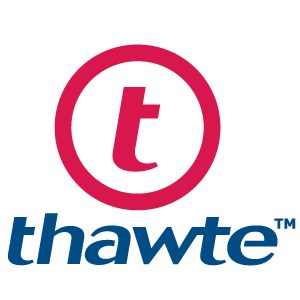







| Provider | Certificate Name | Validation Type | Subdomains Secured | Issuance | More Info |
|---|---|---|---|---|---|
 | RapidSSL® | Domain Validation | Single | 10 minutes | |
 | RapidSSL Wildcard® | Domain Validation | UNLIMITED | 10 minutes | |
 | QuickSSL® | Domain Validation | Single | 10 minutes | |
 | True BusinessID | Organization Validation | Single | 1-2 Days | |
 | QuickSSL® Premium | Domain Validation | Single | 10 minutes | |
 | True BusinessID with EV | Extended Validation | Single | 1-10 days | |
 | True BusinessID Wildcard | Organization Validation | UNLIMITED | 1-2 days | |
 | Essential | Domain Validation | Single | 1 to 2 Hours | |
 | Instant | Organization Validation | Single | 1-2 Days | |
 | Essential Wildcard | Domain Validation | Multiple | 1-2 Days | |
 | Premium Wildcard | Organization Validation | Multiple | 1-2 Days | |
 | EV | Extended Validation | Single | 1-2 Days | |
 | EV SGC | Extended Validation | Single | 1-2 Days | |
 | UCC DV - NEW | Domain Validation | Multiple | 1-2 Days | |
 | UCC OV - NEW | Organization Validation | Multiple | 1-2 Days | |
 | SSL Secure Site | Organization Validation | Single | 1-2 Days | |
 | SSL Secure Site Pro | Organization Validation | Single | 1-2 Days | |
 | SSL Secure Site with EV | Extended Validation | Single | 5-7 Days | |
 | SSL Secure Site Pro with EV | Extended Validation | Single | 5-7 Days |
1 - Allows up to 25 SANs per certificate
2 - Allows up to 100 SANs per certificate
3 - Allows for 4 additional sub-domains in addition to the primary domain (chosen at time of purchase)
Local host names and IP addresses are supported on all non-EV SAN certificates.
Inexpensive, basic protection recommended for personal or hobby sites and small forums that need basic encryption for things like logins, forms or other non-transactional data.
Affordable protection for small businesses. Recommended for small- to mid-sized business sites where validation of the company is important. Highly recommended for sites with low-volume eCommerce transactions.
Proven to boost customer confidence. Recommended for mid-sized to enterprise sites where visitor confidence is key. A must for websites with transactions for payments, online banking, and eCommerce.
What makes our SSLs better?

Completely ad free suite enhances your team's ability to focus on work and get more stuff done

With mobile support for the complete suite of apps, work will never stop and business will never sleep

Choose a wide variety of SSL certificate to match your budget & need.

The installation is very easy with Thobson Support

SSL allows sensitive information such as credit card numbers, social security numbers, and login credentials to be transmitted securely. Normally, data sent between browsers and web servers is sent in plain text-leaving you vulnerable to eavesdropping. If an attacker is able to intercept all data being sent between a browser and a web server, they can see and use that information.
More specifically, SSL is a security protocol. Protocols describe how algorithms should be used. In this case, the SSL protocol determines variables of the encryption for both the link and the data being transmitted. All browsers have the capability to interact with secured web servers using the SSL protocol. However, the browser and the server need what is called an SSL Certificate to be able to establish a secure connection.
SSL secures millions of peoples' data on the Internet every day, especially during online transactions or when transmitting confidential information. Internet users have come to associate their online security with the lock icon that comes with an SSL-secured website or green address bar that comes with an Extended Validation SSL-secured website. SSL-secured websites also begin with https rather than http.
An SSL creates a secure tunnel through which information including usernames, passwords, credit card numbers and more can pass safely.
When a website visitor enters an SSL-protected area of your website, your SSL certificate automatically creates an encrypted connection with the visitor's browser.
Once the connection is complete, a padlock icon and HTTPS prefix appear in the visitor's browser bar to show them they're safe to share personal details. If you have a high-assurance EV Certificate, your visitor's status bar will also turn green.
All information passing to and from your website is now scrambled by 2048-bit encryption that's virtually unbreakable by hackers.
Step 1 - Go to SSL in the control panel Log in to the One.com control panel, scroll down and click SSL. Step 2 - Activate SSL Select On.Read the terms of business and check the box to accept.Click Save. Note: It takes up to 90 minutes for the SSL certificate to be installed and ready on your domain. Step 3 - Go to File Manager in the control panel Open File Manager in the One.com control panel. Step 4 - Create an .htaccess file Click the arrow at the right of the blue button and select New other file.Name the file .htaccess, beginning with a dot. What is .htaccess? Note: If you already have an existing .htaccess file on your web space, you don't need to create a new file. Instead you can edit the existing file. Step 5 - Edit the .htaccess file Select the .htaccess file and click Edit at the top of your screen to open the text editor. Step 6 - Paste in the code Paste the following code in the text editor, and click Save at the top of your screen. #Rewrite everything to https RewriteEngine On RewriteCond %{HTTPS} !=on RewriteRule ^(.*)$ https://%{HTTP_HOST}%{REQUEST_URI} [L,R=301] Step 7 - Done! All done! Open your site in your browser and check if you see the green secure lock.
SSL increases security on your website by encrypting the data transfer between your website and its visitors. SSL is becoming a requirement for more and more services online. Many users appreciate that a website is protected by SSL, which is indicated by the "https" in the browser's address bar. To activate SSL for your website: Log on your Control PanelClick SSLSelect OnClick Save When you enable SSL for the first time, it takes up to 90 minutes before the certificate is installed and working. We use SNI (Server Name Indication) which enables multiple websites to run on the same IP number. Note:SNI is not supported by Internet Explorer on Windows XP meaning that the users running Windows XP and Internet Explorer, will not be able to take advantage of SSL on your website.SNI works on Chrome 6+, Opera 8+ and Firefox 2.0+ on Windows XP.
Step 1 - Go to SSL in the control panel Log in to the One.com control panel, scroll down and click SSL. Step 2 - Activate SSL Select On.Read the terms of business and check the box to accept.Click Save. Note: It takes up to 90 minutes for the SSL certificate to be installed and ready on your domain. Step 3 - Go to Plugins in your WordPress admin Log in to your WordPress administration and click Plugins.Click Add New at the top of your screen. Step 4 - Install the Really Simple SSL plugin Type in Really Simple SSL in the search field.Click Install now to install the plugin. Step 5 - Activate the plugin Click Go ahead, activate SSL! to activate the plugin and start serving your WordPress site via https. Note: If you get an error that SSL has not been detected, this means that the certificate hasn't been installed yet. Try again later. Step 6 - Done! All done! Open your site in your browser and check if you see the green secure lock.
Web sites using an Extended Validation certificate will cause web browsers to change the address bar to a green color and also to display the name of the Organization to which the certificate was issued. Certificate Authorities will only grant Extended Validation certificates to an organization after the Certificate Authority verifies that the genuine organization is requesting the certificate.The green address bar gives assurance to visitors of the web site that the website they are visiting is actually run by the organization they want to be dealing with, rather than a fraudulent site posing as that organization.
This article will explain how SSL works and what SSL certificates provide.What do SSL certificates do?SSL Certificates provide two important roles for systems that use them:1. SSL certificates provide security by encrypting the data between the browser and the web server.Data encryption is critical for financial transactions or other situations where websites are requesting sensitive data from visitors. Many web users will not have confidence that their interactions with the website is secure and encrypted, unless they see the lock icon which provides a visual cue that an SSL certificate has been used to protect data.2. SSL certificates provide identity verification, through domain and organization validation. Only the verified owner of a domain name may purchase an SSL certificate for that domain. For Organization validated SSL certificates, only verified, approved representatives of the organization are permitted to purchase an SSL certificate for domains in use by the organization.Extended Validation (EV) certificates take identity validation even further. Sites with an EV SSL certificate will cause the address bar on the web browser to turn green. Users are able to view information about the website that will help them to confirm that they are dealing with who they believe they are dealing with.Both applications of SSL Certificates are important for building a trust relationship with end-users that is required before they will pass along personal, or financial information to websites or online service providers.How does SSL Work?In the case of web browsers surfing secure web sites, SSL communication starts with the web browser requesting the digital certificate from the web server. The certificate contains the hostname of the web server, an expiration date of the certificate, the public key of the web server, and is signed by a Certificate Authority. The web browser can validate all of these pieces of information except for the public key of the web server. If all of the verifiable components pass validation, the web browser will generate its own public key and send it back to the web server. When the web browser's public key is sent back to the web server as a response, it uses the web server's public key, which was contained within the certificate, to encrypt the browser's public key being sent. Now both the web server and web browser will be able to communicate with each using secure, encrypted communications because they have exchanged each of their public keys.